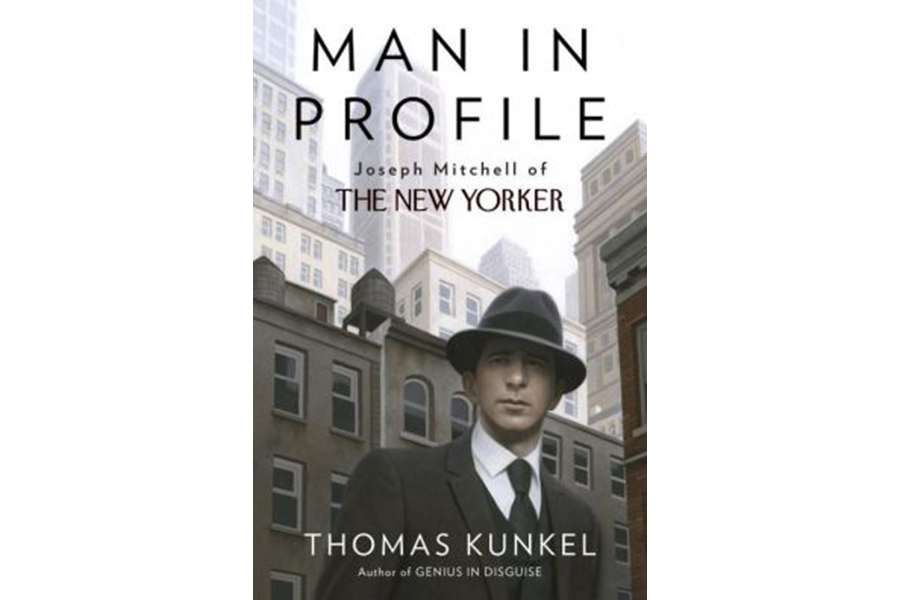'Man in Profile' is a splendid new biography of fabled New Yorker writer Joseph Mitchell
Loading...
In 1944 Joseph Mitchell wrote one of the great profiles in the storied history of The New Yorker. Its subject was Old Mr. Flood, a 93-year-old “seafoodetarian,” comfortably retired after the sale of his demolition and salvage business and established in rooms at the Hartford Hotel. Mr. Flood’s aspiration was to live to the age of 115; he felt that a seafood diet would get him there. Each morning he visited the Fulton Fish Market:
He rises at five, has a cup of black coffee in the Hartford dining room, lights a cigar, and begins a leisurely tour of the fish stalls, the oyster sheds, the flounder-filleting houses, the smoking lofts, and the piers. When he reaches Fulton Street, the pandemonium in the market invigorates him. He throws his shoulders back, sniffs the salty air, and rubs his palms together.
After selecting a piece of fish or eel or skate, Mr. Flood would carry it to a friendly restaurant kitchen and instruct the cook how to prepare it. Italian cooks were best; “If the cook is an awful drunk, so much the better.” After eating, he fed the seagulls until nine o’clock, and then, Mitchell writes, Mr. Flood was “ready for his first drink of the day.”
The author of this profile had much in common with the subject. Like Mr. Flood, Joseph Mitchell was an old soul, body and spirit, who quietly pined for the way things were. A regular in the city’s historic saloons, he was the type to mourn when it came time to retire a suit or buy a new car. Decent, wry, and melancholic, Mitchell was “an old-time New Yorker, the melting-pot type, the Tammany type.” Very much like Mr. Flood, Mitchell saw in the Fulton Fish Market a microcosm of New York’s teeming multitudes: cacophonous, uncontainable, magnificent in its disarray, it thrived at full capacity. Here was the place where it all came together and it all made sense. Notably unlike Mr. Flood, however, Mitchell was flesh and bone: the real thing. Mr. Flood was a fiction. Mitchell made him up.
Mitchell is the subject of a splendid new biography by Thomas Kunkel: Man in Profile: Joseph Mitchell of The New Yorker. A staff writer for the magazine for over 50 years beginning in 1938 and one of its most beloved figures, Mitchell has not until now received biographical treatment, unlike his contemporaries Harold Ross, A. J. Liebling, and James Thurber. Kunkel has written a moving and affectionate book that begins in rural North Carolina and follows Mitchell as he journeys to New York, falls in love with the city, and endlessly wanders its streets and alleys, hat cocked just so, patiently looking for the next Mr. Flood or Professor Seagull or Dragger Captain to chronicle.
Kunkel addresses Mitchell’s fabulism head-on, and indeed the topic is one of the book’s selling points. Mitchell, Kunkel insists, was no Stephen Glass or Jayson Blair; he created characters like Mr. Flood based on real people (and leavened with autobiography), with the full knowledge and encouragement of his editor, Harold Ross. Mitchell also informed readers that Mr. Flood was a composite rather than an actual individual, albeit some years after the stories appeared as nonfiction profiles in the magazine. No one seemed to mind. But Kunkel painstakingly demonstrates that Mitchell also invented several other characters and passed them off as real, including Cockeye Johnny Nikanov (the “King of the Gypsies”), and Orvis Diabo, a Native American working as a riveter in bridge and skyscraper construction. About these creations, Mitchell never confessed.
Kunkel seems to forgive Mitchell, or at least he suggests that the controversy should not overwhelm the reputation of an extraordinarily fine writer – “the greatest literary journalist of his time.” Composite profiles were not uncommon at The New Yorker in the 1940s and ’50s, and Kunkel argues that “at the end of the day, Mitchell was really creating literature.” Kunkel is right that we should judge Mitchell by the standards of his time rather than ours; but on the other hand, one thing that was as vital then as it is now is the writer’s need to earn the reader’s trust. After learning of Mitchell’s inventions, I found myself doubting the authenticity of his journalism at every turn. When I read the Mr. Flood profiles and observed Mitchell quoting at length from letters that Mr. Flood had allegedly written, I knew that I was being deceived and found myself growing wary, sometimes even angry.
Initially prolific, Mitchell began publishing less and less often, to the point where his byline became a rare treasure. Eventually a sort of blue perfectionism silenced his pen. He contributed his last article to The New Yorker in 1964 but remained on the staff until his death in 1996, reporting to the office, walking his beat, and assembling notes on an autobiographical book about New York City that never came together. Hoping for another masterpiece, each successive editor of the magazine, from William Shawn to Tina Brown, consented to this arrangement. It became a notorious and agonizing case of writer’s block. In many ways it was a fitting ending to the writing life of so elegiac a figure. "Man in Profile" reminds us that there can be no melancholy without loss. Whatever his transgressions, and long after the inspiration dried up, the New York that Mitchell populated with characters large and small, true and imagined, was itself as real as buildings and pavement. It remains as impervious to time as Old Mr. Flood.








